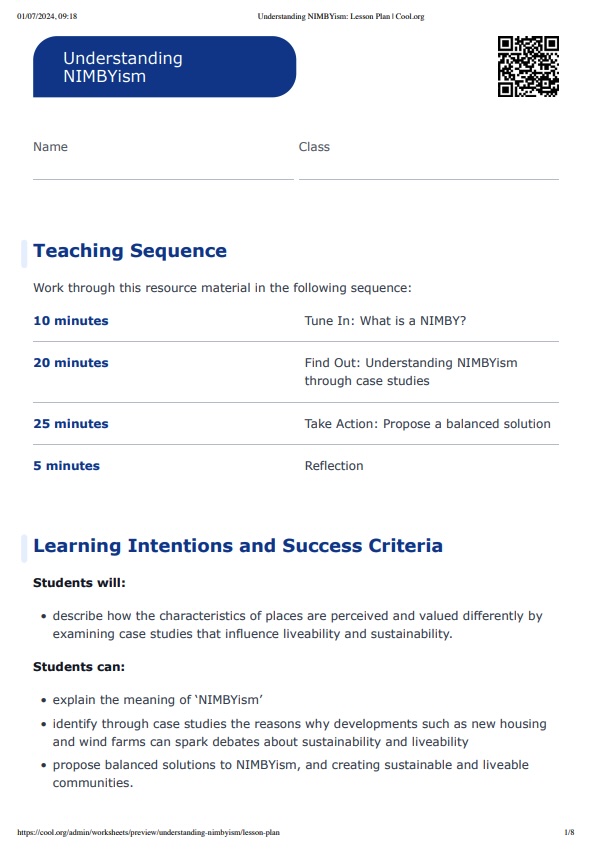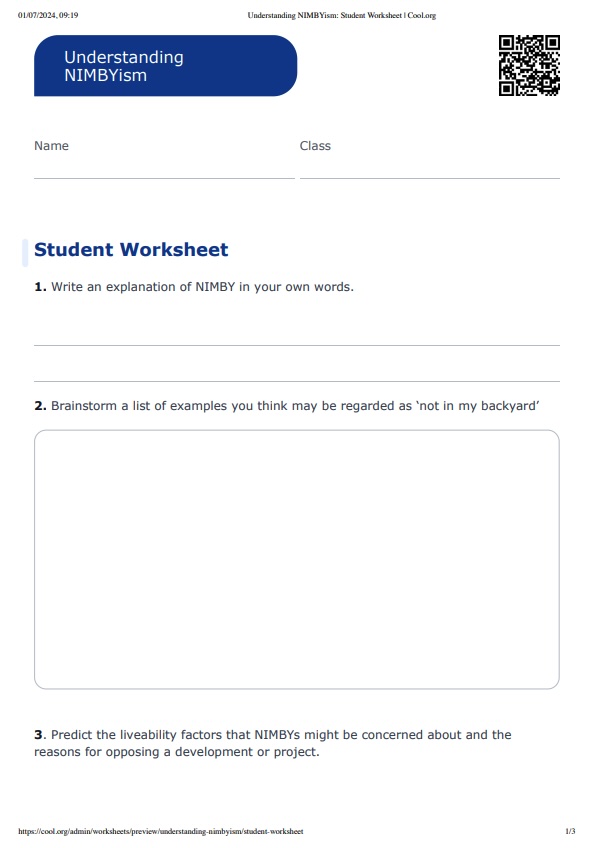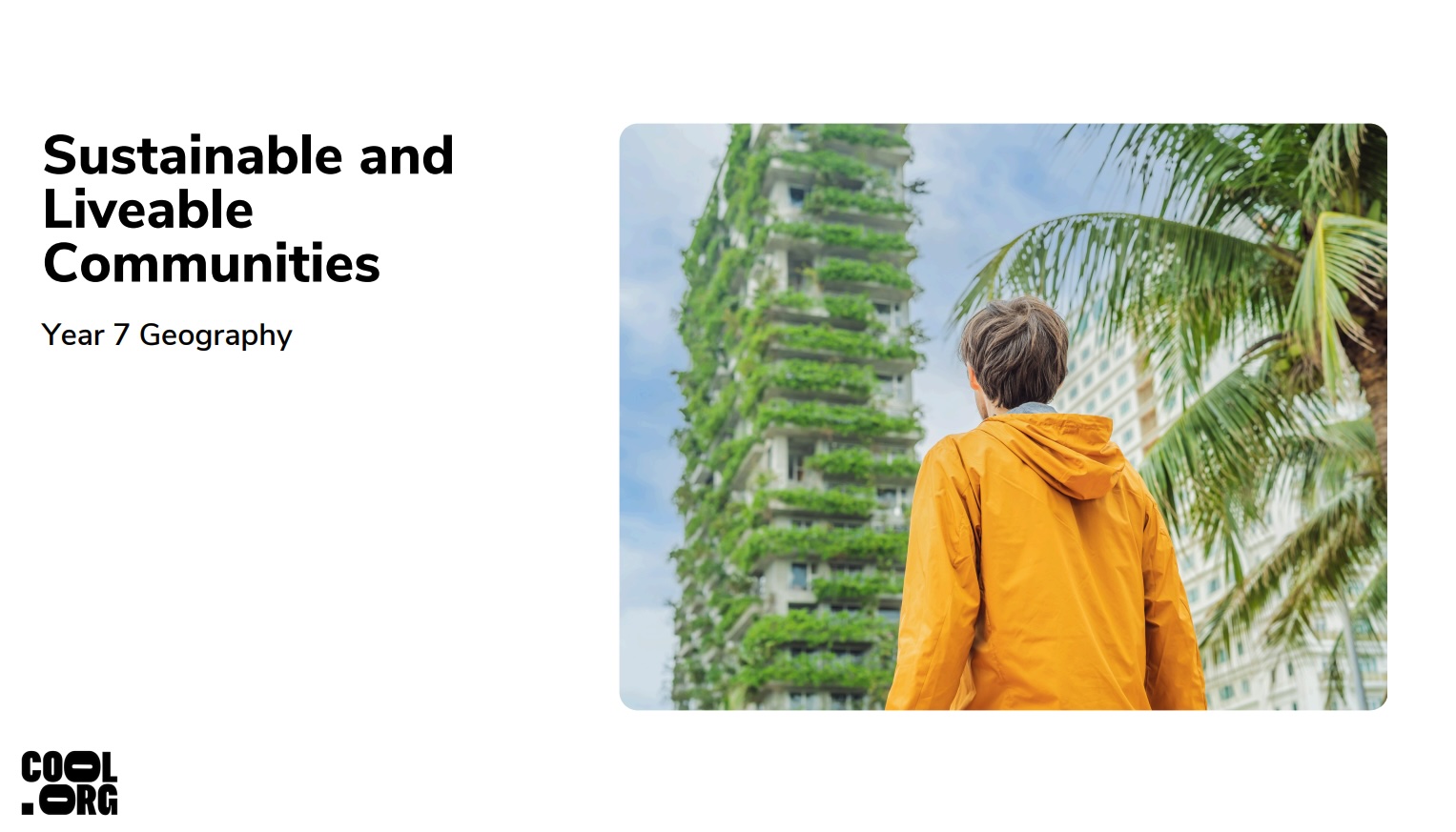Lesson summary
Students will understand how different perceptions, the influence of environmental quality, and the location and distribution of services and facilities have implications for liveability. Students will examine case studies from Australia about the ‘Not in my backyard’ (NIMBY) concept and why this can spark debates about the sustainability and liveability of communities.
Learning intentions:
Students will...
- describe how the characteristics of places are perceived and valued differently by examining case studies that influence liveability and sustainability.
Success criteria:
Students can...
- explain the meaning of ‘NIMBYism’
- identify through case studies the reasons why developments such as new housing and wind farms can spark debates about sustainability and liveability
- propose balanced solutions to NIMBYism, and creating sustainable and liveable communities.
Lesson guides and printables
Curriculum links
Select your curriculum from the options below.
Lesson details
Skills
This lesson is designed to build students’ competencies in the following skills:
- creative thinking
- critical thinking
- collaboration
- communication
- ethical understanding
- social skills
Curriculum Mapping
Australian Curriculum (v9.0) content description:
Year 7 Geography
- Factors that influence the decisions people make about where to live, including perceptions of the liveability of places and the influence of environmental quality (AC9HG7K05)
- The location and distribution of services and facilities, and implications for liveability of places (AC9HG7K06)
Relevant parts of Year 7 achievement standards: Students can describe how the characteristics of places are perceived and valued differently by people. They describe the importance of environments to people.
NSW Syllabus outcomes:
- GE4-2 describes processes and influences that form and transform places and environments
- GE4-3 explains how interactions and connections between people, places and environments result in change
General capabilities: Critical and Creative Thinking and Personal and Social Capability
Cross-curriculum priority: Sustainability
Level of teacher scaffolding: Medium - The teacher will need to scaffold theory, and facilitate discussions and activities to help students understand and apply knowledge.
UN Sustainable Development Goals
UN SDG 11: Make cities and human settlements inclusive, safe, resilient and sustainable
- Target 11.3: By 2030, enhance inclusive and sustainable urbanisation and capacity for participatory, integrated and sustainable human settlement planning and management in all countries.
Resources Required
- NIMBY Images Hook and Sustainability Diagram Visual Explainer
- Student worksheet
- Whiteboard and whiteboard markers
Additional Info
This is an original Cool+ lesson.
Related Professional Learning
Refresh Your Geography Curriculum
Quick Summary: This course will help you rejuvenate your year 7 to 10 geography curriculum with engaging lessons that build curiosity and captivate the interest of your students.





Welcome back!
Don't have an account yet?
Log in with:
Create your free Cool.org account.
Many of our resources are free, with an option to upgrade to Cool+ for premium content.
Already have an account?
Sign up with:
By signing up you accept Cool.org's Terms and Conditions(Opens in new tab) and Privacy Policy(Opens in new tab).